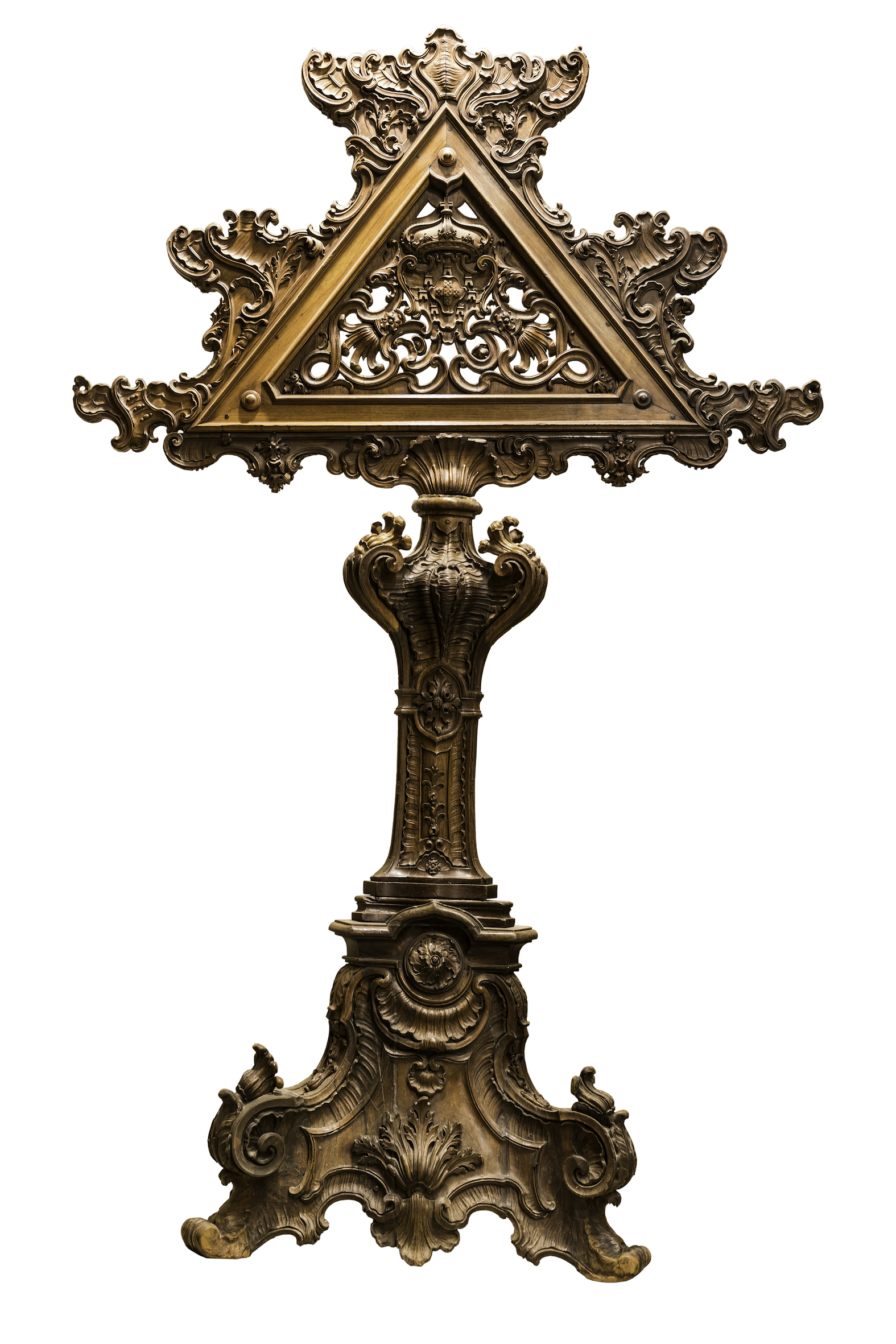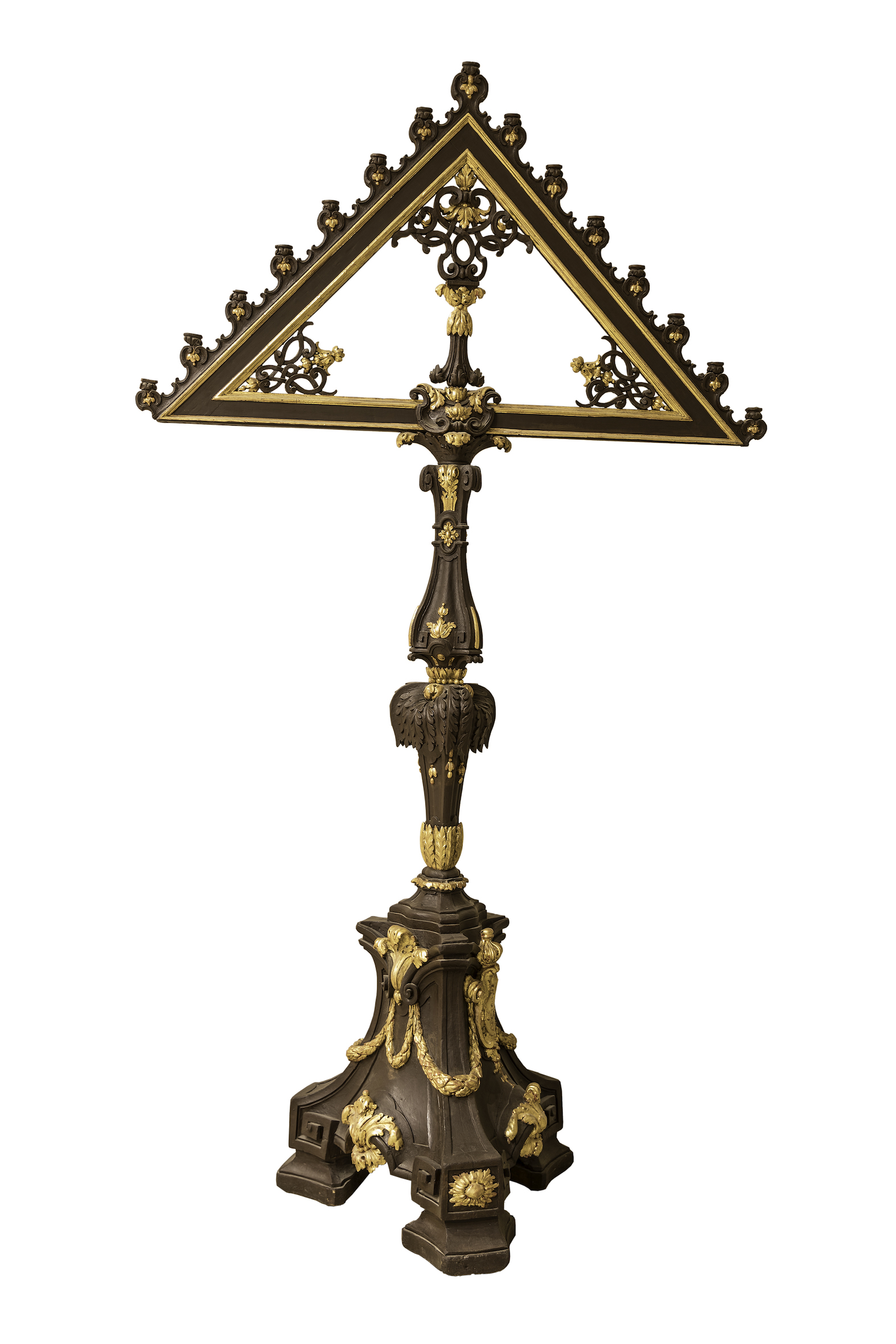Announcing the Darkness: The Candelabra of the Office of Tenebrae
Exceptional pieces of the Latin Christian patrimony, the majestic candelabras of Tenebrae conserved by the Terra Sancta Museum are, without a doubt, among the least known and mysterious works of the collection. In fact, their usage, which is specific to Lent and which comes only three days out of the year, was largely abandoned until the liturgical reforms of the Second Vatican Council. On the occasion of Holy Week, let us rediscover these objects and the special office they held, not so long ago…
Singular, strange, monumental and imposing: these fifteen-branched wooden candelabras have impressed the curious and puzzled Catholics in the sacristies of those rare churches where they have been conserved. Solitary and rarely used, except in a few parishes and monasteries, the candelabras of Tenebrae such as those offered by the Kingdom of Portugal to the Custody of the Holy Land in the 18th century are the last witnesses of a rite that passed away under Pope Pius XII. These latter, particularly massive and finely wrought, are shaped in a pattern of curves and counter-curves, offering a decorative grandeur that poses a striking contrast with the grave and solemn office for which they are used.
Over the centuries, until the year 1955, the candelabra of Tenebrae presided over a solemn celebration corresponding with matins and lauds, which took place during the last three days of Holy Week. It was during the evenings of the Paschal Triduum that altar boys would laboriously carry the heavy candelabras from the sacristies in which they lay dormant to the right side of the altar. The office would “begin in such a way as to end after sunset,” which is how it derived the name, “the Office of Darkness.”


A first psalm is slowly and solemnly intoned in Gregorian chant. This psalm, which varies depending on the day, is offered up as a funerary lamentation. When it ends, the first of the fifteen lit candles is extinguished. Next, a second psalm is intoned, and then a third. At the end of each of these psalms, a candle is extinguished. Next, while the crowd silently recites the Pater Noster, a soloist (often a child) comes forth to chant the lamentations of Jeremiah translated into Latin, as was the practice at ancient funerals. The haunting notes of these hymns evoke an atmosphere of sadness and pain, an atmosphere proper to the text and above all to the hour: this is the hour of Christ’s Agony and Passion.
Thus ends the first night. Two other nights of equal length follow, and as each hymn is sung the candles are extinguished one-by-one, until only a single candle remains. After chanting the Benedictus, the altar boy takes the last remaining candle and hides it behind the altar until the end of the office. Next, the celebrant strikes the pew with his missal, and all the faithful present follow suit. A terrible, almost deafening noise fills the church plunged in darkness, recalling the earthquake and the darkness that accompanied Christ’s death on the Cross.
(Translated from French by Virginia Nyce)



